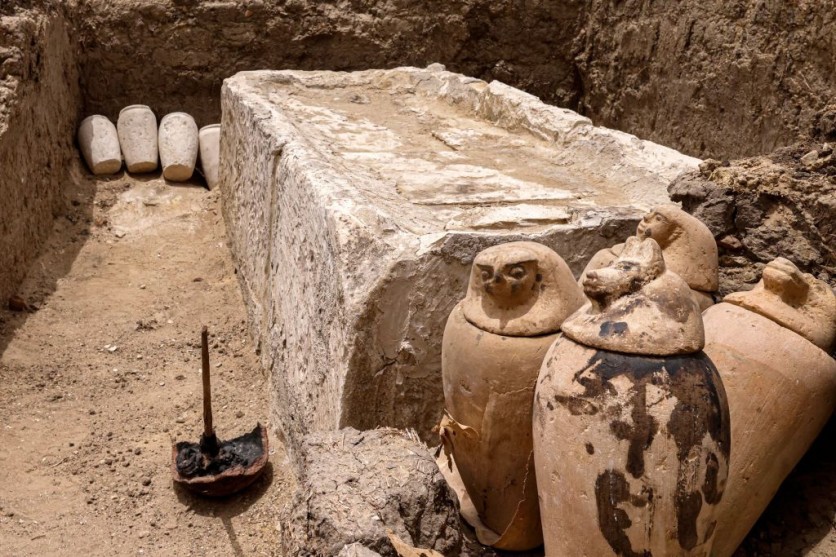Archaeologists have made a captivating discovery, unearthing a pendant that may potentially hold the distinction of being the earliest recorded instance of a carved phallus, as reported by Phys.
The significant finding occurred in 2016 when archaeologists were conducting excavations at a dig site nestled in the scenic Khangai Mountains of northern Mongolia. Amidst their exploration, they stumbled upon a human-carved stone measuring approximately four centimeters in length.

Upper Paleolithic Pendant
Originally identified as T21, the stone underwent further examination by the research team. Remarkably, dating analysis of the surrounding material indicated that the stone's origins could be traced back to a remarkable period spanning roughly 42,400 to 41,900 years ago, placing its creation within the Upper Paleolithic era.
It was the presence of two distinct grooves on the stone that captivated the attention of the researchers. One groove encircled the midsection of the stone, while the other extended longitudinally from top to bottom.
The researchers hypothesize that these purposeful carvings were intended to imitate the shape and features of the male phallus. Additionally, they propose that the midsection groove was crafted to represent the glans, while the top-to-bottom groove aimed to replicate the appearance of the urethral opening.
Further scrutiny of the pendant revealed an intriguing detail on its flip side-a notable sheen that suggested significant contact with a soft material.
Drawing from this observation, the researchers posit that the soft material in question was likely human skin, hinting at the possibility that the pendant was worn around the neck, functioning as a personal adornment.
Debates Within the Archaeological Community
The conclusions drawn by the research team have sparked debates within the archaeological community, with divergent opinions emerging.
Some experts argue that the stone might have served a utilitarian purpose or functioned as an unidentified tool, casting doubt on its interpretation as a phallic representation.
Moreover, skeptics propose that the midsection groove could have been created for the sole purpose of attaching a string to facilitate the pendant's suspension around the neck.
Nevertheless, should the archaeological and historical community ultimately accept the pendant as a genuine depiction of a phallus, it would claim the title of the oldest known carved phallus.
Surpassing the current record by a significant margin, which stands at approximately 28,000 years and originates from Germany, this extraordinary find represents an intriguing glimpse into the artistic and symbolic expressions of our ancient ancestors.
The findings of the team were published in the journal Scientific Reports.
Related Article : Archaeologists Find an Extremely Rare 1,300-year-old Gold and Gemstone Necklace From a Medieval Woman in England

ⓒ 2025 TECHTIMES.com All rights reserved. Do not reproduce without permission.




